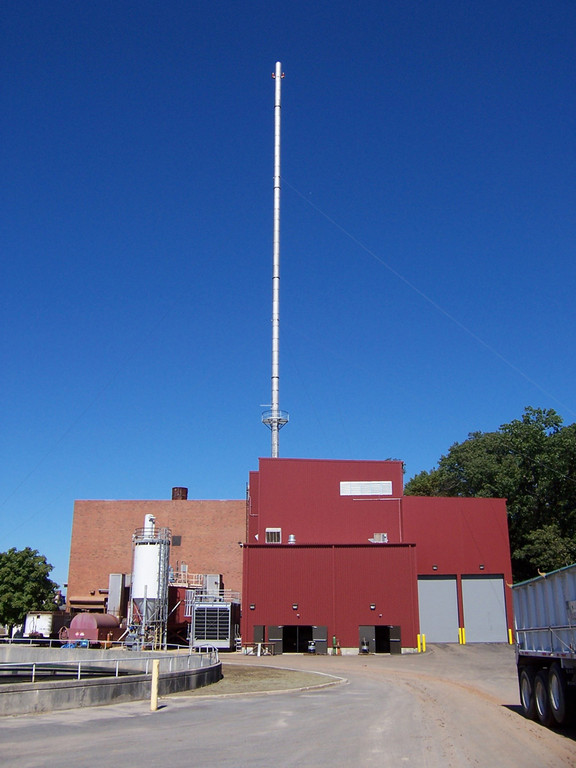
When Synagro Technologies Inc. and Woonsocket entered into an agreement to generate power at the company’s sewage incinerator, it was an unprecedented deal in Rhode Island. It’s the first time a local municipality and private entity in the business of sludge incineration will venture into the field of energy generation.
“The agreement allows Synagro to construct a cogeneration plant, where we would take the heat from our incineration process and generate electricity,” said Synagro Plant Manager David Abbamonte, a veteran of sewage-sludge incineration. “The agreement will allow the city to receive a $6.5 million deal on tax revenue over the next 20 years, additional revenue above and beyond what we were already paying the city for our waste-incineration plant.”
Synagro, with seven regional offices nationwide, including one in Woonsocket, plans a $10 million heat-to-energy cogeneration facility, retrofitting the existing incinerator to burn and dispose of sewage sludge.
Synagro purchased the sludge-processing facility in 1988, shortly after the city decided to privatize its operation. On July 26, the city’s budget commission approved a deal with Synagro to generate power at its incinerator, which takes in wastewater from Woonsocket and North Smithfield, and Bellingham and Blackstone, Mass. The Woonsocket wastewater-treatment facility treats about 10 million gallons of sewage daily.
The energy will be used to power the incinerator and any extra will be sold back to the city at the lowest available commercial rate to be used to power equipment at the wastewater-treatment facility. Synagro will continue to burn Woonsocket’s sludge at no charge.
According to Pamela Racey, Synagro’s national vice president of business development, the incinerator was upgraded in 2007 with a new fluid-bed technology to improve burning. Extra space was provided at that time in planning for future cogeneration. There will be no exterior construction associated with the project, equipment will be added into that framework to extract the heat and convert it to power. A steam turbine will convert the heat to steam, then to electric generation.
“There are no new emissions. We are capturing the air stream of what goes up the stack now and we’re stripping the heat our of it then putting it right back up, but at a cooler temperature,” Racey said.
According to data presented by the U.S. Environmental Protection Agency, there are approximately 170 sewage-sludge incineration plants in operation in the United States. There are 14 sludge incinerators in New England. Cranston runs the only other incinerator in the state.
CH2M will take over operations at the plant within 90 days, according to a release from the Woonsocket Dept. of Public Works. Final design is due by November 2013 and construction will begin March 2014, ending in January 2017. CH2M Hill will operate the plant through construction for a 20-year term.
R.I. Department of Environmental Management’s Alex Pinto, the state’s biosolids expert, says the incinerator will be the first cogenerator in the state. The only other wastewater-treatment facility that burns sludge for disposal purposes is in Cranston.
According to Ruth A. Gold, an air-quality specialist at DEM, Synagro informed the Division of Air Resources of the possibility of employing a heat-recovering, boiler-type steam generator in December 2010. “Because it was recovering nothing but heat from the fluidized-bed incinerator it was not adding pollutants,” she said. No fuel was being used to “fire up” the system, thus Synagro was given the go ahead to proceed as planned.
Racey has been involved with making the cogenerator a reality, meeting with residents and governmental officials for the last year.
“Overall the atmosphere has been positive. This is a project with substantial benefits, both environmental and economic for the community,” she said.
In talks with town officials, she said the environmental aspects were obvious; it was the economic aspect that caused the greatest trepidation. “They wanted to make sure there were no negative community aspects,” she said.
“We have a small cogeneration, heat-recovery facility in New Haven. It was designed by the city but we operate it and we definitely see an energy savings. Woonsocket will be the first one that we design … and construct,” she said, adding Synagro is working with the city on its recommendations for improvement. •











